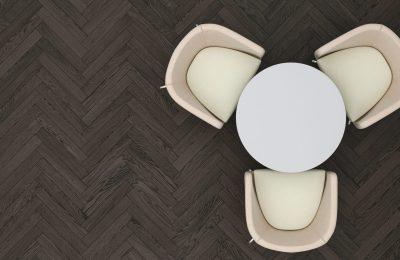In the spa industry, hiring the right employee always benefits owners By Brooke SmithFor employers, hiring a qualified employee can…
The new frontiers of wellness
If the 2017 Global Wellness Summit was any indication, we’re finally catching on.
The 2017 Global Wellness Summit in Palm Beach, Florida, shone a spotlight on disease prevention last October. According to the World Economic Forum, roughly 70 percent of all deaths each year result from preventable diseases, while the global cost of largely preventable chronic disease could reach $47 trillion by 2030.
“The time has come to pool our resources – knowledge, access, funding – and use our collective megaphone on the world stage to work towards achieving a world free of preventable disease,” said Susie Ellis, GWI Chairman and CEO. “Unlike President Kennedy’s famous moonshot, this will require not one, but many incremental steps.”
In the real estate development industry, at least, the work has definitely begun. According to GWI, the U.S. alone has 1.3 million potential buyers for wellness-oriented real estate each year. Compared to only a dozen projects under development a few years ago, 600-plus with ‘wellness propositions’ are now built, partially built or in the pipeline. Homes designed to improve people’s wellness are commanding 10-25 percent higher prices.
“We’re at the beginning of a new movement in home and community design that tackles our uniquely modern problems,” says GWI senior researcher Katherine Johnston. “Sedentary lives, unhealthy diets, stress, social isolation and loneliness, pollution, nature-deprivation… are creating powerful opportunities.”
The global $119 billion wellness lifestyle real estate and communities market can be characterized as passive (materials, technologies and design that improve air, water, sound and lighting) or active (design features like sidewalks, porches, stairs and parking lots that promote healthy options like walking instead of driving). Wellness communities will unite people with common goals, interests and experiences, to pursue wellness in a holistic, multidimensional way.
Despite the surge, wellness real estate is still less than half the size of the green building industry ($260 billion), and a mere 2 percent of the global construction industry overall. It seems as if people are finally getting the message, though: A fat bank account is a hollow reward compared to living in a healthy physical and social environment.
The host venue itself was an impressive exemplar of the conference’s theme. The 538-room Italian Renaissance-style Breakers Palm Beach has undertaken a massive transformation towards wellness orientation that has put the well-being of its 2,000 employees on top of its to-do list. With the help of many people including the Johnston & Johnston Human Performance Institute, The Breakers transformed its culture with initiatives ranging from health, nutrition, fitness and energy management programs to personal growth opportunities. Members on breaks, for example, are encouraged to take the stairs from the basement of the main building to its seventh floor, tracking their treks on the sign-in sheet located at the top. Motivational art celebrates their accomplishments along the way, with incentive prizes and recognition at various milestones (the Eiffel Tower equals nine treks, the Grand Canyon 54 treks, etc.). So-called “hiring filters” swell the ranks with staff that are positive, caring, service-oriented, friendly, honest, motivated and high-energy. An eye-watering $30 million each year is invested in property enhancements and organizational renewal.
“Team member performance is the start of a balance sheet score card,” says Breakers’ ownership member and spokesman Garrett Kirk Jr., whose company has enjoyed a healthy 11 percent return on equity over the past 20 years.
“70 percent of people who go to work every day think they don’t make a difference. The leadership team took the [Johnston & Johnston] information back to integrate into their teams, and today we enjoy 82 percent employee retention,” he said. Other benefits of The Breakers’ strategies include lower medical costs, reduced sick days and lower hiring costs. On the whole, the Summit’s dizzying array of seminars and luminaries left me hopeful about mankind’s potential for defeating some of our biggest health and environmental problems. I was particularly impressed with a presentation by Dr. Dean Ornish, Founder and President of Preventive Medicine Research Institute. His Ornish program has reversed heart disease with lifestyle choices, and continues to conduct ground breaking research to prove that our choices, actions and thoughts can transform our health regardless of our genetic makeup.
Other notable speakers included Dr. Jan-Emmanuel De Neve (Oxford University and SAID Business School), who is involved in producing the World Happiness Report. Ramesh Causy, CEO and founder of France-based Partnering Robotics, talked about how ‘Wellness Robots’ can enhance human wellness. And Frits Dirk Van Paasschen, author of The Disruptors’ Feast: How to Avoid Being Devoured in Today’s Rapidly Changing Global Economy, talked about ‘Wellness in the Age of Disruption,’ and the need for entirely new traditions to reclaim control of our businesses and lives.
The opportunity for spa owners and operators? Like every other business dealing with human activity, you need to be aware that the new wellness imperative will permeate every decision and aspect of our lives. Will your facility be prepared to deliver an authentic, quality experience consistent with the wellness parameters expected by tomorrow’s savvy consumers? They will be expecting nothing less.




